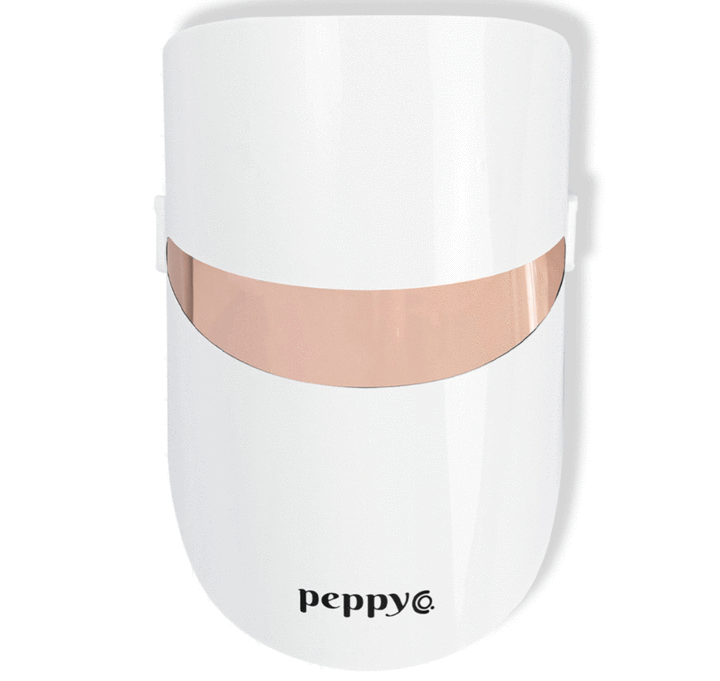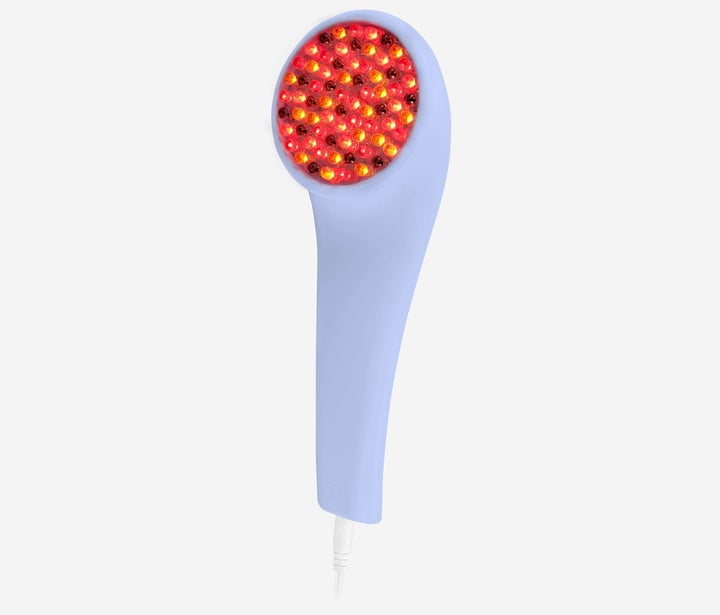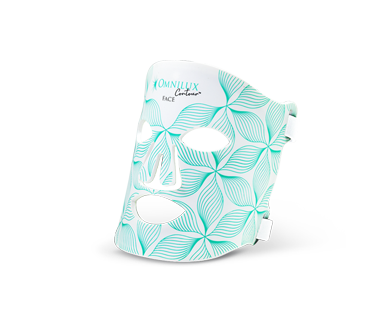
LED masks look vaguely like something Iron Man would wear from the outside, and shine multicolored lights onto the skin that claim to clear acne, prevent wrinkles and repair sun damage. Kourtney Kardashian uses one (or at least sells a device on her website), so if it’s good enough for a Kardashian, why not for the rest of us?
But it’s not quite that simple. At-home LED devices can range in price dramatically. There’s an under-$40 Neutrogena LED mask for acne (which only lasts for a month before the activator light needs to be replaced). Or you can step it up a bit and try the Kardashian-approved DMH Aesthetics device for $190. If you’re up for a bigger investment, there’s a $435 Dennis Gross mask or other devices that go for thousands of dollars.
Overall, these devices aren’t cheap, so are they worth the money and time investment? Do they do anything at all?
There’s science to prove that most professional treatments used by dermatologists and estheticians, which are higher-powered than at-home devices, work. LED, or light emitting diode, can help with wound healing and skin regeneration, and even muscle repair and pain relief (but here we’ll focus on the beauty benefits of LED). “Different wavelengths of light in LED lights, including blue and red, penetrate the skin at different depths. This penetration may trigger biological processes that help the skin rejuvenate and heal,” said Corey L. Hartman, board-certified dermatologist and founder of Skin Wellness Dermatology in Birmingham, Alabama.

Red LEDs repair cells, increase collagen and elastin production, and can reduce inflammation by increasing the metabolic activity of fibroblasts, a type of cell in the skin. “I recommend red LED for mature skin to slow the aging process, reverse sagging skin, dissolve wrinkles and aid in optimal cellular function so that skin is fed, hydrated and releases waste completely and easily,” said Julie Civiello-Polier, a holistic esthetician and founder of Linea, her specialized skin protocol.
For those with breakouts, cystic acne and cuts and wounds, blue LEDs can be helpful. Blue LED is absorbed by the oil glands and affects porphyrin, a molecule in the skin. “When excited, these compounds kill the bacteria that contribute to acne,” Hartman said.
And while the evidence is less conclusive, yellow LEDs have the potential to be beneficial for sun damage, hyperpigmentation and redness.
But in order to have real benefits — both at home and in professional settings — LED devices must be powerful enough to make these processes happen. In office, devices are created specifically for medical use, and therefore have higher power levels and longer wavelengths that penetrate more effectively than most at-home devices.
Size matters, too, both for convenience and efficacy. “Sometimes the panels or devices are so large in-office, the entire front or back of the body can receive the LED at one time and a treatment length is usually 30 minutes,” Civiello-Polier said. “Some of the really small at-home devices only cover a portion of the face, like a cheek or only the crow’s feet around one eye. When the at-home device is this small, the treatment can take a really long time if one wants to allow the whole face to receive the healing LED,” she shared.
Despite some drawbacks, such as requiring a longer treatment time and being less powerful than in-office treatments, the experts who spoke with HuffPost agree that at-home LED devices can be worth it. “In-office treatments can be slightly more beneficial as they are, well, professional. And they are often combined with a facial. But many can’t make time for multiple weekly sessions, this is where an at-home device would give greater results,” said Natalie Aguilar, celebrity aesthetician and dermatological nurse at N4 skin care.
What To Look For
Do your research first. “I’ve seen some weird brands online that really make me question if it’s a legitimate LED device or if it uses bulbs from a child’s light-up toy,” Aguilar said.
The most important feature to look for is the wavelengths, which should be between 633 and 830 nanometers. “If the wavelengths are a little less, like 490 nm, that is still within healing range, it’s just not as effective for rejuvenation and regeneration,” Civiello-Polier said. “If there are no measurements listed anywhere, skip it and keep shopping,” she advised.
At-home devices might require more frequent use to make up for the lower power, so make them a consistent part of your routine should you start using one. “The lesser strength of the at-home devices may require a more robust regimen of daily use to receive the same amount of healing and rejuvenation power that one might receive in-office,” Civiello-Polier said. Risks are low, so LED devices can even be used multiple times per day if your schedule allows it, but start slow and pay attention to the device’s instructions to see how your skin will react first.
If you haven’t had good luck treating your skin with other products, LED devices might be beneficial but aren’t crucial to a good routine. “At-home LED light therapy can be helpful to treat aging, sun damage and acne — but not necessarily more helpful than other products,” Hartman said.
If you do want to add an LED device to your routine, the experts have some suggestions.
Peppy Co. LED Light Therapy Mask V2

“I like the Peppy Co. LED Mask. It is an affordable at-home option that is safe and easy to use,” Hartman said. It has red, blue and yellow lights to combat aging, acne and pigmentation.
Celluma Pod

“Celluma is the only at-home and in-office manufacturer I know of where one could have a treatment at-home that is just as effective as one in a dermatologist’s office,” Civiello-Polier said. It also contains three different LEDs — red, blue and near infrared — to treat a long list of skin issues. This model is the most affordable option, but you can browse the full collection here.
LightStim

The LightStim is a handheld device available in red or blue light, which can treat both wrinkles or acne. “They are easy to use, FDA-approved and clinically proven. They have plenty of bulbs and have a built-in timer so you know just how long to treat each area,” Aguilar said. You can also buy the professional device for home from the brand — if you have $6,000 to spend.
Omnilux Contour FACE

An adjustable mask makes it easier to get good results on your entire face. “The most optimal is when the light doesn’t have to travel very far to reach our skin, and when the light is far away, the efficacy lessens significantly,” Civiello-Polier said. She recommends this one, which uses red and near infrared light to target fine lines and wrinkles.
HuffPost may receive a share from purchases made via links on this page. Prices and availability subject to change.